Can science stop sharks attacking humans?
- Published
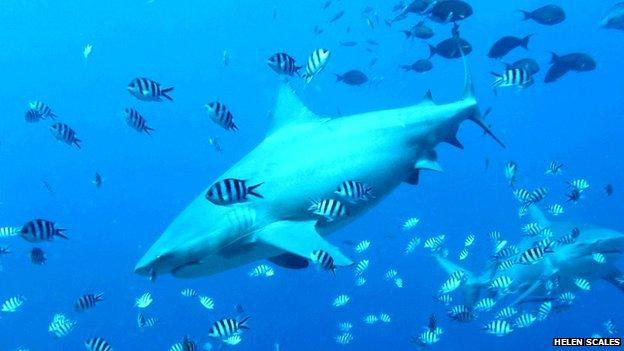
Sharks have patrolled the oceans for at least 400 million years and evolved into a huge range of remarkable species.
There are deep sea lantern sharks that glow in the dark, wobbegong sharks that grow shaggy beards, and majestic, plankton-sifting whale sharks - the biggest fish in the sea.
Nevertheless, when many people think of these animals, one thing comes to mind: shark attacks.
As a beachgoer, diver or surfer your chances of encountering a shark, let alone being killed by one, are in fact incredibly slim; lightning strikes, bee stings and car accidents all pose far more of a threat than sharks.
In reality, people kill millions more sharks than sharks kill people.
A quarter of all shark species, and their relatives the rays, are threatened with extinction, according to a recent report from the International Union for the Conservation of Nature (IUCN).
The main threat to sharks is overfishing and in greatest peril are the largest species.
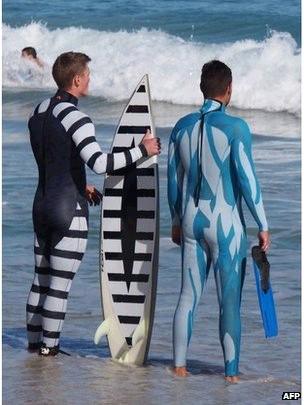
The striped suit tells sharks a diver is not safe to eat, while the blue design acts as camouflage
But a controversial cull of sharks was recently ordered in Western Australia following a spate of attacks.
Scientists are now looking at other approaches to deal with the shark attack issue.
Prof Shaun Collin is leading a University of Western Australia (UWA) team of neurobiologists who are learning to think like sharks.
"We're trying to tread this very fine line of protecting both humans and sharks at the same time," Prof Collin told the BBC World Service programme Discovery.
By studying shark brains and shark senses, the team is developing and testing various non-lethal repellents. The aim is to manipulate the sharks' finely-tuned senses in ways that discourage them from approaching and attacking people.
One of these is a "shark-proof" wetsuit designed to make people look like poisonous, black and white banded sea snakes, something that many sharks tend to avoid.
The stripy wetsuit was first thought up years ago by marine biologist Walter Starck. Now a detailed understanding of shark vision is helping the UWA team to bring this idea up to date.
Nathan Hart, assistant professor at UWA, explained to me that sharks don't see as well as humans.
"We've made sure that the size of the bands can be detected by a shark from a certain distance," he says.
Tests of the new wetsuit design are currently underway. This involves wrapping the fabric around a barrel filled with dead fish and watching how sharks respond to it in the wild.
It is still early days, but so far, Nathan told me, the results have been encouraging.
"Based on what we know about the sensory systems of sharks, they should reduce your risk to some extent," he says.
"Just like a seatbelt in a car, it doesn't reduce your risk to zero; it's a matter of reducing your risk by a certain amount and by as much as possible," he adds.
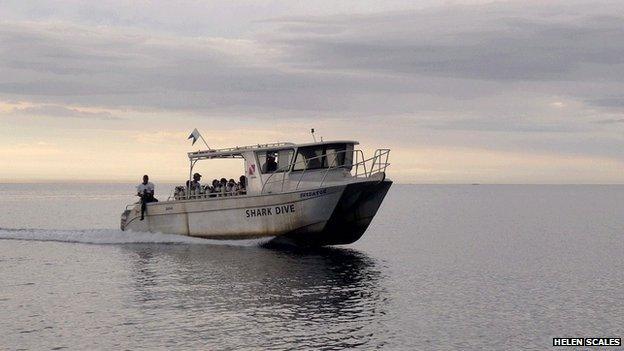
Divers in Fiji have trained the sharks how to behave in return for food
As well as trying to protect individual swimmers, another tactic is to make certain areas out of bounds to sharks.
"We can try and define areas on the beaches where people are confident they can go and swim," says Dr Hart.
Bubble curtains could be deployed to keep sharks away from popular beaches.
The idea is to lay perforated hosepipes across the seabed and pump air through them and create a plume of bubbles that sharks may decide not to swim through.
Sharks can see and hear the bubbles and also feel them with their lateral line, a system of sense organs many fish have.
"It's a system of what's known as 'distant touch'; it detects vibrations and very low-frequency sound in the water," Nathan explained.
Early tests showed that tiger sharks eventually pluck up the courage to cross a barrier of bubbles, suggesting they have the ability to learn.
Eugenie Clark, a veteran marine biologist at the Mote Marine Laboratory in Florida, pioneered studies of shark learning back in the 1950s.
Nicknamed "The Shark Lady", Dr Clark trained captive sharks to press targets with their snouts and ring bells for a food reward. She showed for the first time that sharks can learn and remember things.
Eugenie told me about the time she took a trained baby nurse shark as a gift for the Crown Prince of Japan who shared her fascination with fish.
"The airline gave me an extra seat for the shark. Most people didn't know, he was such a tiny thing he was less than two feet long. But he never made a mistake," says Eugenie.
Recently, I witnessed for myself the capacity sharks have to learn and in particular that they can learn not to attack people.
I went diving off the Pacific island of Fiji and saw my first bull sharks, notorious as one of the most aggressive shark species.
Locals from Beqa Adventure Divers have trained a population of around 100 bull sharks to approach a diver, one-by-one, and gently take a chunk of fish offered to them by hand.
The sharks have learned how to behave if they want food.
"They know us very well," Fijian divemaster Papa told me before I jumped in the water. "That's the good thing, they know what's going on."
Preparing for the dive, I wasn't exactly sure how I would react to seeing these giant predators. But as soon as I got down beneath the waves my nerves evaporated and I saw just how graceful and calm bull sharks can be.
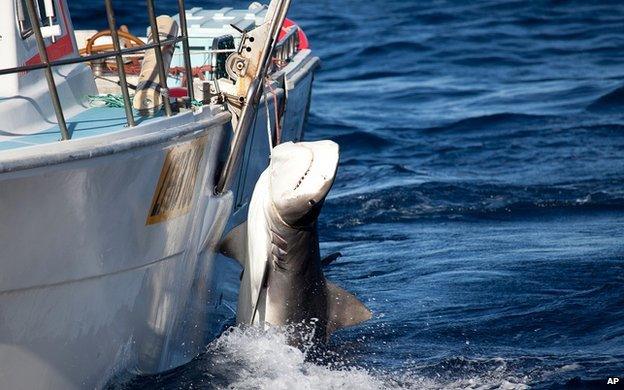
The Western Australia government responded to a recent spate of attacks with a cull
There was no safety cage or any sort of repellent and I never felt in any kind of danger.
As well as helping to shift the sharks' bad reputation as insatiable killers, the Fijian divers are showing that a live shark in the water is worth far more than a dead one.
In Fiji and elsewhere around the world, sharks are under immense pressure from the demand in Asia for shark fin soup.
Back in Western Australia, the shark cull continues amid beachside protests.
The problem has been an abnormal high in shark attacks, with seven fatalities over the last three years compared with 20 in the last century.
The response of the Western Australia government has been to lay baited hooks offshore from popular beaches. Any great white, tiger and bull sharks that are caught and are larger than 3m long are shot and dumped at sea.
One opponent of the cull is shark attack survivor Rodney Fox. Fifty years ago he suffered a horrific attack from a great white in South Australia but since then has become a dedicated shark advocate.
"We just have to learn how to live with the sharks and not just kill them from fear," he told me.
He thinks killing sharks deliberately is an unscientific and irrational strategy to try to reduce the attack rate.
But Western Australia's government says the cull is in place to protect swimmers and surfers. Premier Colin Barnett has said: "The West Australian government is absolutely confident that the policy in place is the right policy and we intend to continue it."
An open letter from more than 100 scientists has urged Mr Barnett to reconsider the cull, highlighting its environmental impact and the low chance of catching the individual sharks responsible for the attacks.
"Every scientist that I've heard of and talked to all agree that it's not the thing to do," says Mr Fox.
- Published4 January 2014

- Published18 July 2013
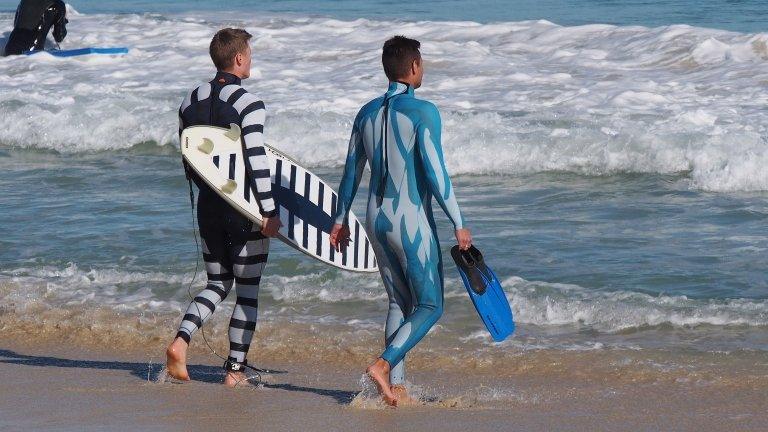
- Published17 July 2012
